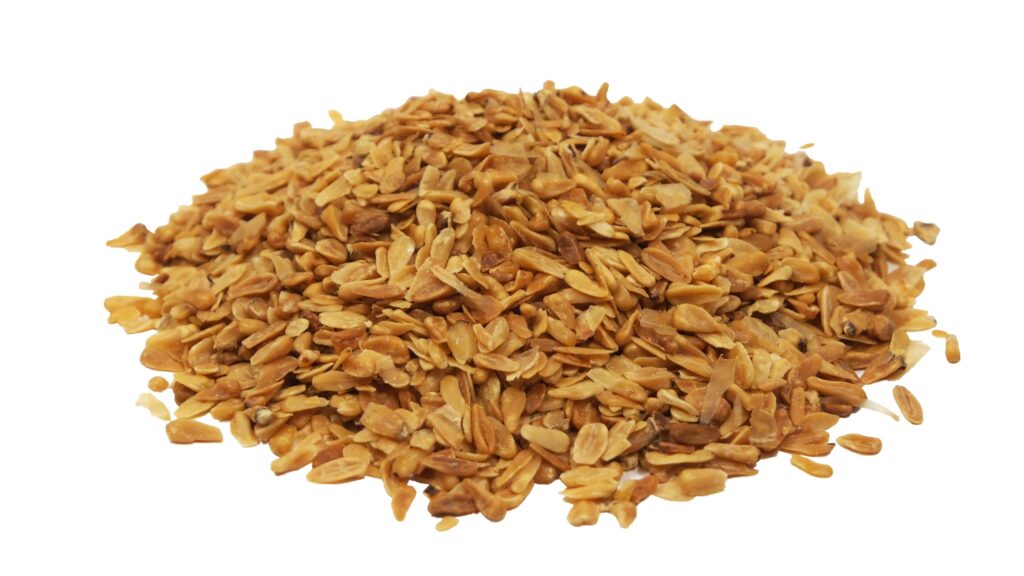
Corn oil
Oil extraction
Corn oil is extracted from the corn germs, which are previously separated from the grain. Corn germ extraction is usually carried out during starch production. For oil extraction, the cold pressing process and / or extraction using hexane is used.
The corn germs are gently pre-heated to the pressing temperature and then added to a screw press. The obtained products, corn oil and corn press cake are immediately processed. The press cake is crushed and cooled before being transferred for further processing or storage. The oil obtained is usually purified to pure oil in several purification stages (coarse filtration, fine filtration, safety filtration).
Properties and shelf life
Good corn oil should be clear and yellowish to reddish. In addition, have a green nutty / sweet smell. The cold-pressed corn oil has a high content of unsaturated fatty acids and vitamin E. Therefore, it is very sensitive to heat.
The solidification point is in the range of about -10 to -18°C. To prevent the oil from going rancid, it should be stored in a cool, darkened place. In this way, a shelf life of about 12 months can be achieved.
Use
In pharmacy and medicine
Corn oil can be used in the pharmaceutical industry for coating tablets and pills.
In cosmetics
It is used for production of soaps, hair care preparations, face and body powders.
In technology
Here corn oil is often used as a lubricant and leather conditioner.
In the food industry
In this field, corn oil is largely used for the production of food products, such as margarine, mayonnaise, dietetics and baby food.
In the kitchen
The oil is mostly used in cold cooking as a seasoning oil.
We will be happy to advise you on this seed and show you options. Contact us
In addition to our own knowledge acquired through pressing tests, the following sources were used to prepare this article:
- Öle, natürlich kaltgepresst, Basiswissen & Rezepte, Marcus Hartmann, Hädecke, 2008
- Heilende Öle, Pflanzenöle als Nahrungs- und Heilmittel, Neue Erkenntnisse, Günter Albert Ulmer Verlag Tuningen
- Lexikon der pflanzlichen Fette und Öle, Krist, Buchbauer, Klausberger, SpringerWienNewYork, 2008
- www.wikipedia.de
- en.wikipedia.org

